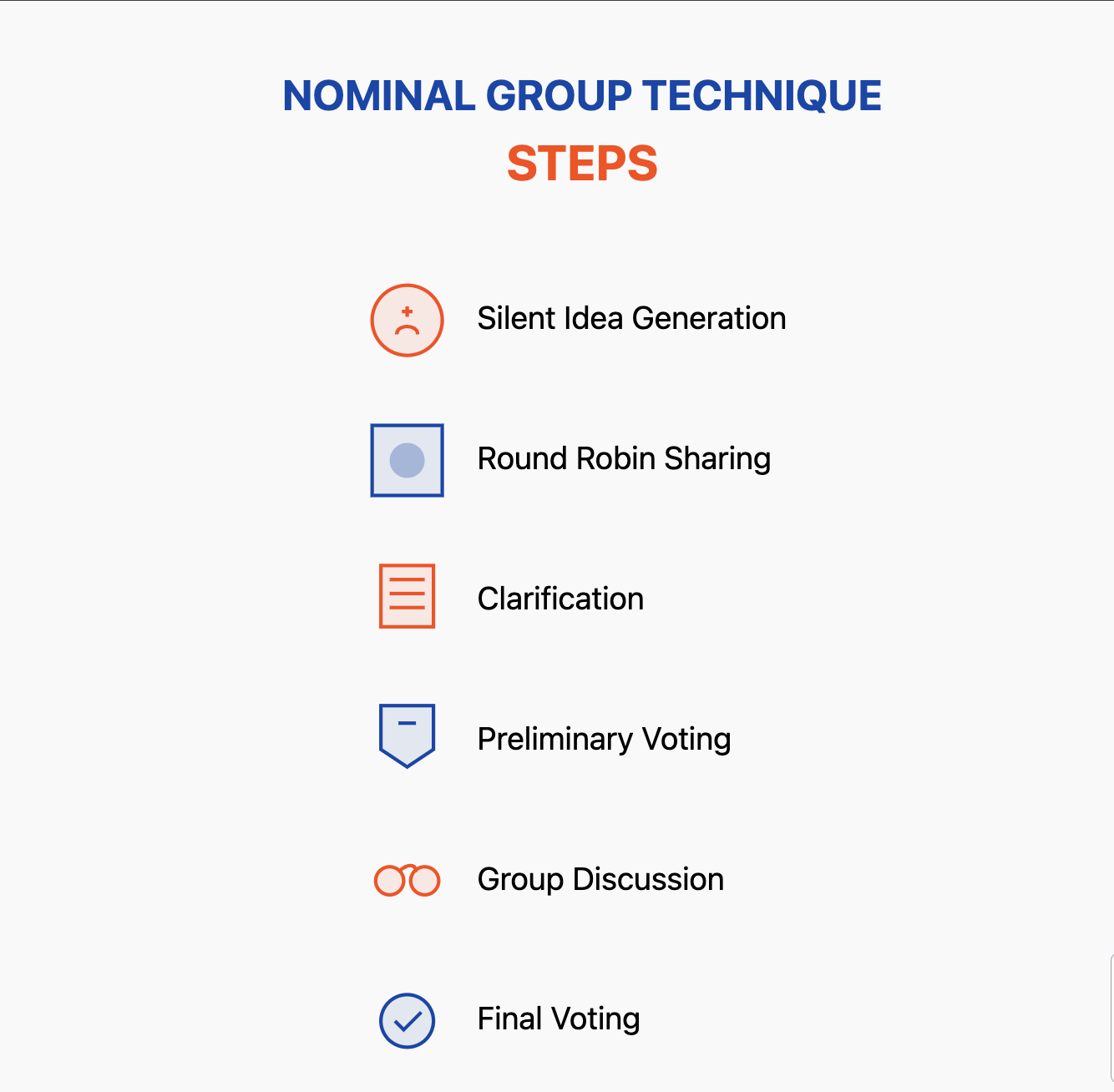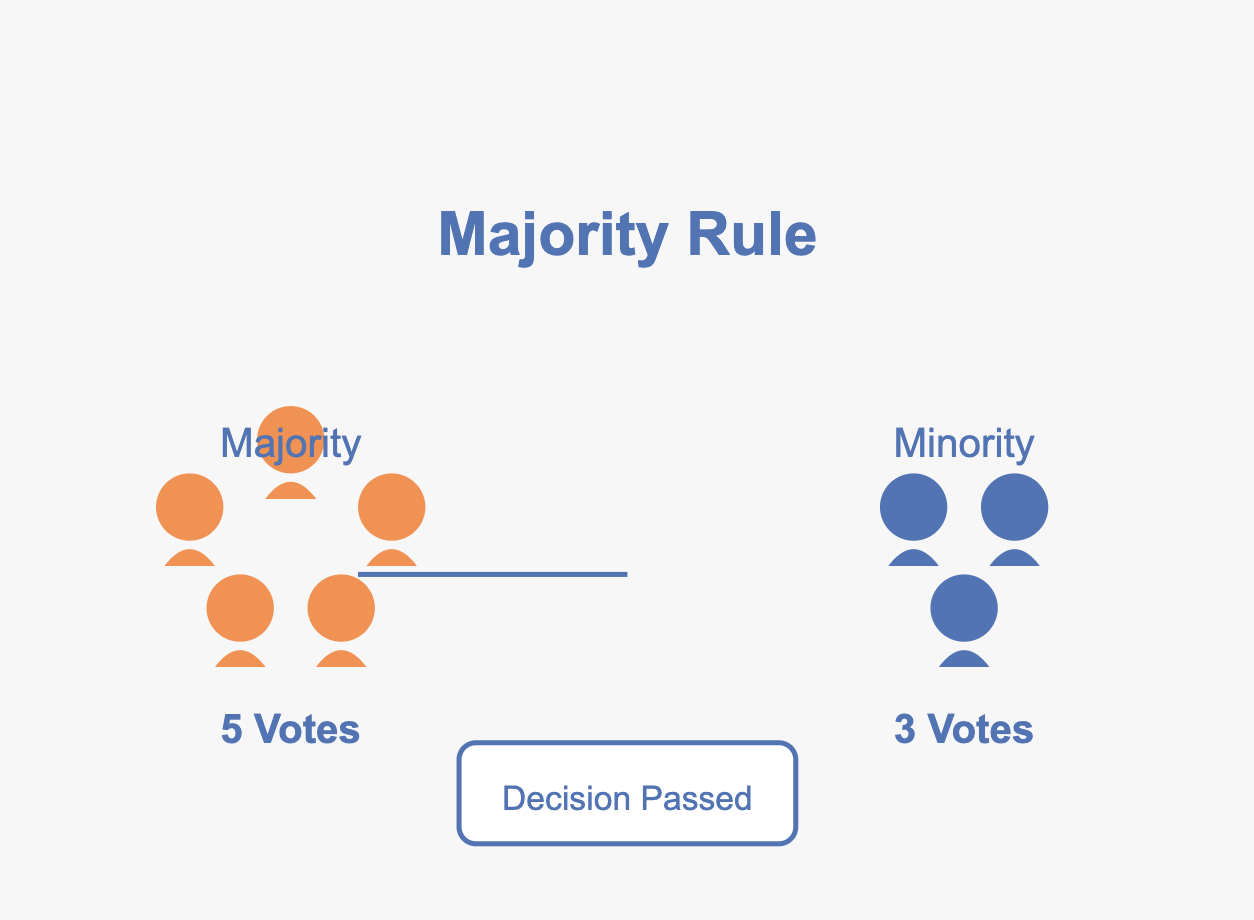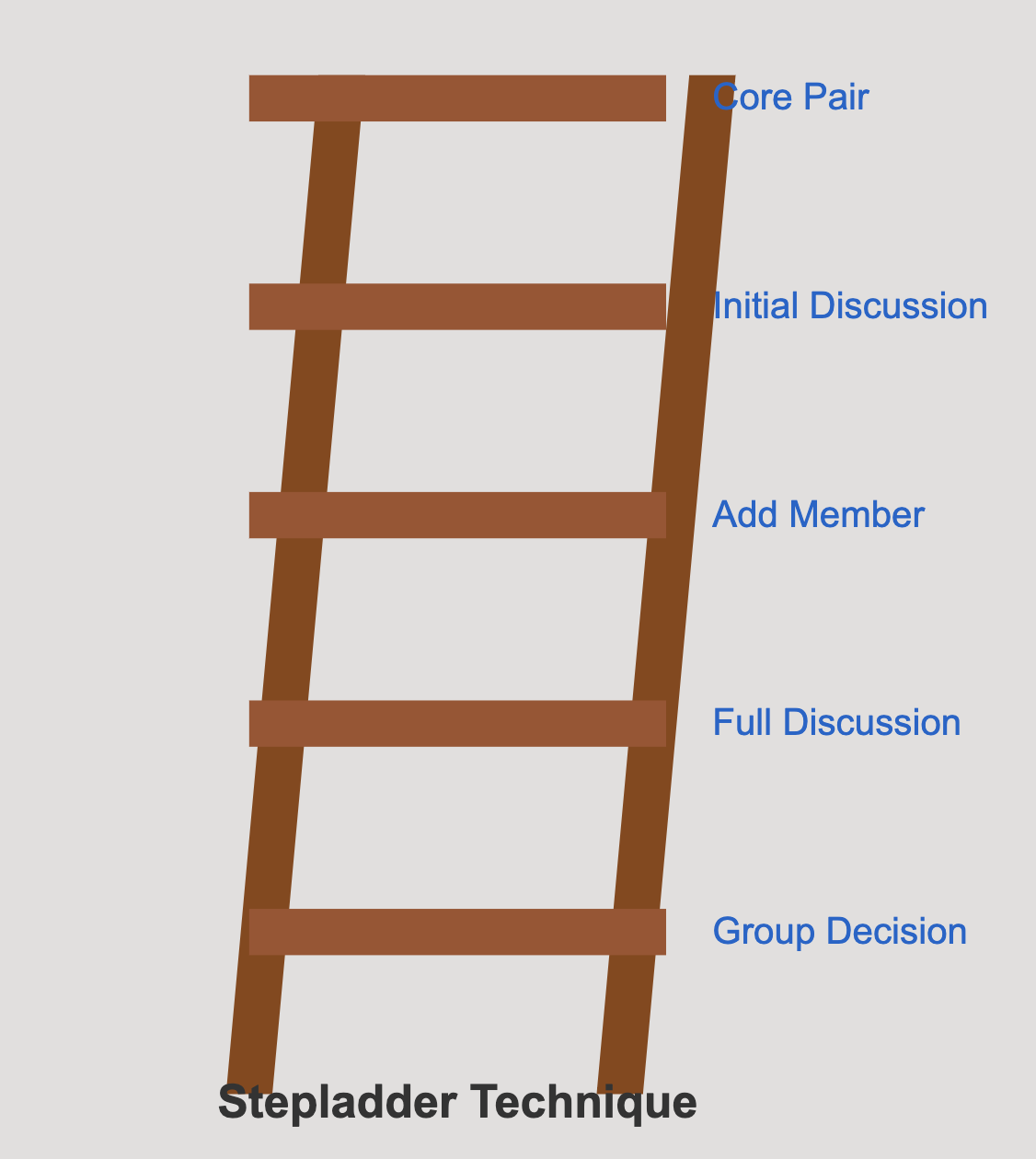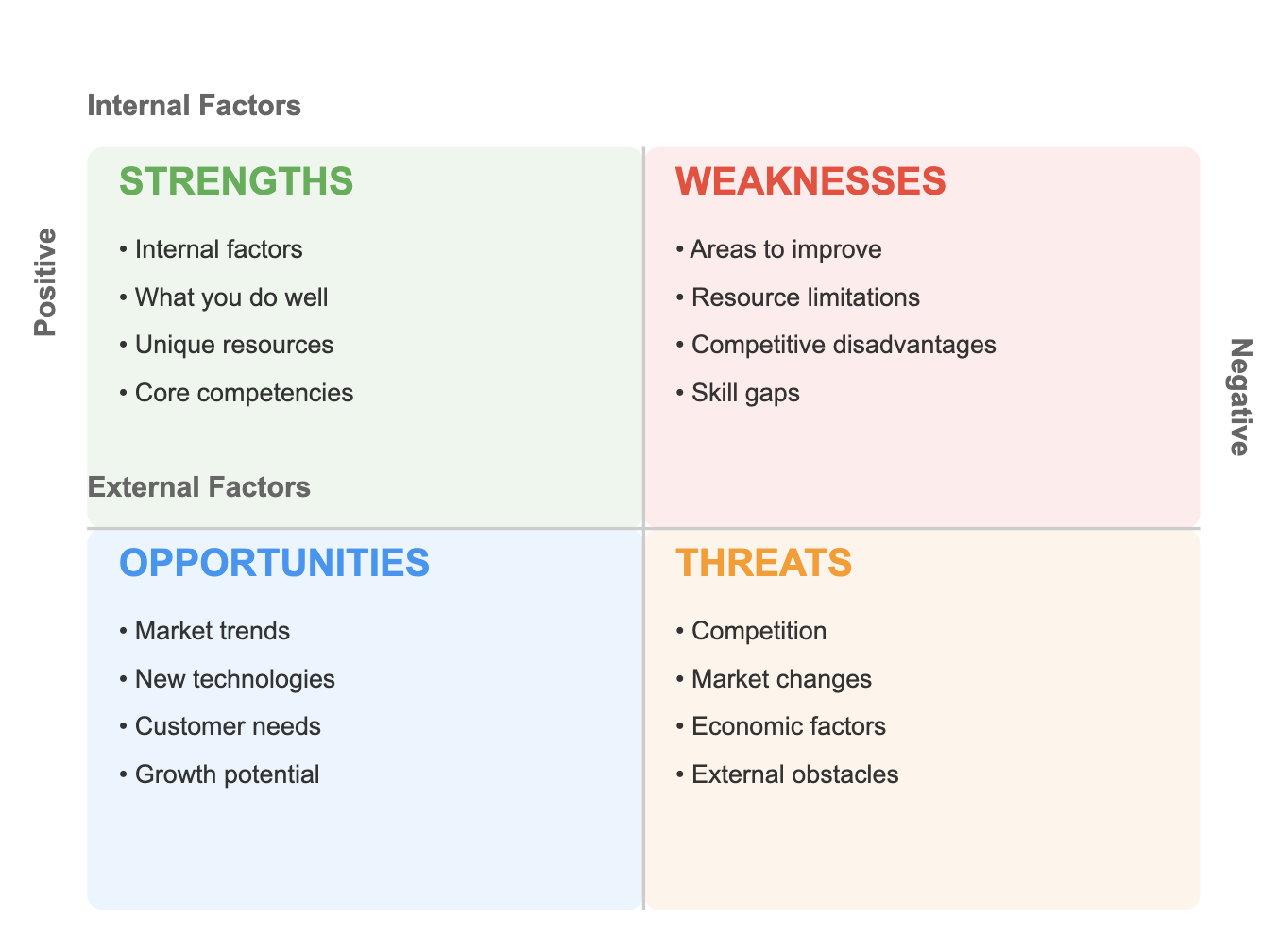Effective group decision-making techniques play a crucial role in fostering teamwork and achieving organizational goals. When teams collaborate on decisions, they combine diverse perspectives, which can lead to innovative solutions. However, this process isn’t always smooth. Teams often face challenges like communication breakdowns, dominant personalities overshadowing quieter members, or difficulty aligning on a final decision.
Adopting structured techniques can transform the decision-making process and overcome these hurdles. This article outlines 10 practical methods to enhance team collaboration and productivity, including brainstorming, the Delphi method, and consensus building. These methods cater to diverse team dynamics and decision-making scenarios, ranging from creative brainstorming to data-driven analysis. Let’s start with the most familiar yet powerful tool: brainstorming.
1. Brainstorming
Brainstorming is probably the most familiar group decision-making technique—and for good reason. It’s all about bringing people together to generate as many ideas as possible, without worrying about whether they’re perfect.
The key is to let creativity flow and avoid shutting down ideas prematurely.
This technique is ideal for kicking off problem-solving or tackling big-picture challenges because it helps teams think outside the box and gather a wide range of possibilities to explore later.

Tips for Structuring Productive Brainstorming Sessions
- Start with a Clear Goal: Define the problem or question upfront to keep the session focused.
- Set Ground Rules: Emphasize that all ideas are welcome, and there’s no room for criticism during the session.
- Timebox the Session: Keep it short and energetic by setting a time limit—this prevents the group from losing focus.
- Use a Facilitator: Appoint someone to guide the session and ensure everyone has a chance to contribute.
- Encourage Variety: Involve team members with different perspectives to spark more creative solutions.
- Visualize Ideas: Write ideas on sticky notes or a whiteboard so everyone can see and build on them.
- Use Krisp’s Meeting Assistant: Leverage Krisp’s AI-powered meeting assistant to capture key ideas and ensure no contributions are missed. This tool helps teams stay focused while seamlessly documenting the session.
- Wrap Up Effectively: End the session by organizing and prioritizing ideas to decide on actionable next steps.
Brainstorming thrives on creativity and a free flow of ideas. Krisp’s note-taker for meetings captures every suggestion shared during the session, ensuring that no idea is forgotten or overlooked. After the meeting, Krisp’s automatic summaries provide an organized list of key takeaways, making it easier to sort and prioritize ideas for the next steps.
2. Nominal Group Technique (NGT)
The Nominal Group Technique (NGT) is a structured decision-making method designed to give everyone an equal voice. Unlike traditional group discussions, NGT begins with each team member brainstorming ideas individually and writing them down. Once everyone has their list, the group comes together to share ideas one at a time, usually in a round-robin format.
After all ideas are shared, the team discusses and clarifies them before voting privately to rank or prioritize the options. This structured approach ensures that every team member contributes without the influence of louder voices dominating the conversation.

Benefits for Quieter or Less Vocal Team Members
The Nominal Group Technique is an excellent choice for teams seeking a fair and balanced way to generate and evaluate ideas, especially when quieter members need encouragement to participate.
- Encourages Inclusivity: NGT creates a safe space for quieter members to share their ideas without being interrupted or overshadowed.
- Reduces Groupthink: By starting with individual input, the technique avoids the tendency for team members to conform to dominant opinions.
- Balances Participation: It ensures that every member contributes equally, making it ideal for diverse teams where participation levels vary.
- Boosts Confidence: Quiet team members often feel more comfortable sharing their ideas in a structured, non-judgmental format.
NGT ensures inclusivity by allowing each team member to contribute their ideas individually. Krisp’s meeting notes document every suggestion shared during the round-robin phase, ensuring anonymity if needed. This creates an unbiased and comprehensive record that the team can reference during the discussion and voting stages.
3. Multi-Voting
Multi-voting is a simple yet effective decision-making technique used to narrow down a list of options. In this process, each team member is given a set number of votes, which they can distribute among the available choices based on their preferences. The options with the most votes advance to the next round or are selected as final choices.
This technique is especially helpful when teams are faced with a long list of ideas or solutions and need a quick way to prioritize without lengthy discussions. It works well in both in-person and virtual settings, making it versatile for various team dynamics.

Use Cases for Narrowing Down Options
- Prioritizing Project Ideas: When a brainstorming session yields many ideas, multi-voting helps the team focus on the most promising ones.
- Feature Selection: Product teams can use this technique to decide which features to prioritize in a development cycle.
- Event Planning: Teams can vote on preferred venues, themes, or activities to streamline decision-making.
- Problem Solving: When multiple solutions are proposed, multi-voting identifies the most feasible or popular options to explore further.
In multi-voting sessions, Krisp records the voting process and captures the rationale behind the team’s choices. The meeting summary outlines the prioritized options and highlights key discussions, streamlining the transition from voting to action.
4. Delphi Method
The Delphi Method is a decision-making approach that relies on anonymous input to eliminate bias and encourage honest feedback. By allowing participants to submit their ideas independently and anonymously, it prevents dominant personalities or group dynamics from swaying the process.
This technique ensures a more balanced, diverse set of opinions and is particularly useful when tackling complex problems requiring expert judgment.
Participants refine their ideas over multiple rounds of feedback, helping the group converge on well-thought-out solutions. The anonymity fosters creativity and honesty, as contributors are free to share insights without fear of judgment or influence.
In multi-round feedback processes, Krisp’s note-taking feature helps compile anonymous input from participants. As feedback evolves, Krisp provides summaries that highlight recurring themes and trends, making it easier for the group to converge on the best solution. This ensures efficiency and accuracy in the decision-making process.
Steps to Implement Effectively
- Define the Goal: Clearly articulate the decision or problem to be addressed.
- Select Participants: Choose individuals with relevant expertise or knowledge, ensuring a mix of perspectives.
- Facilitate Anonymity: Use surveys, digital tools, or questionnaires to collect anonymous responses.
- Gather Initial Input: Ask participants to propose ideas or solutions based on their understanding of the issue.
- Summarize and Share: Compile responses, anonymize them, and share the summary with participants for review.
- Iterate Through Rounds: Conduct multiple rounds of feedback, allowing participants to refine their ideas after seeing the anonymous input of others.
- Finalize the Decision: After a few rounds, evaluate the feedback and identify the most viable or agreed-upon solutions.
5. Consensus Building
Consensus building focuses on finding solutions that everyone actively supports, avoiding the need for forced compromise. Instead of settling for a “good enough” outcome, it seeks alignment through collaboration and shared understanding.
Effective Strategies:
- Start with Shared Goals: Clearly define the common objective to keep discussions aligned and focused.
- Foster Open Communication: Encourage honest input and active listening to ensure every voice is heard.
- Focus on Interests, Not Positions: Understand the “why” behind each stance to find common ground.
- Explore Creative Solutions: Brainstorm ideas that integrate everyone’s perspectives rather than choosing between options.
- Use a Neutral Facilitator: A facilitator can help mediate and guide discussions constructively, avoiding conflicts.
6. Majority Rule
Majority rule is a straightforward and democratic decision-making method where the option that receives more than half of the votes is selected. Each team member has an equal say, and decisions are made based on the majority’s preference.

This method is quick and efficient, making it ideal for scenarios where fairness and simplicity are priorities. However, it assumes that the majority’s decision aligns with the best outcome for the group, which may not always account for minority perspectives or more complex issues.
When Does This Method Work Best?
- Simple Decisions: Majority rule is most effective for straightforward choices with limited options, such as selecting a meeting time or finalizing a logo design.
- Time-Sensitive Situations: When a decision needs to be made quickly, majority rule helps avoid lengthy deliberations.
- Low-Stakes Decisions: For decisions with minimal long-term impact, this method ensures a resolution without exhaustive discussion.
- Large Groups: In teams with many participants, majority rule provides an efficient way to collect input and finalize choices.
7. The Stepladder Technique
The Stepladder Technique is a structured approach to group decision-making that ensures every team member contributes to the discussion. It starts with a core group of two members who discuss the issue at hand. Gradually, other members are added one by one, sharing their thoughts before hearing the ongoing group discussion.
Each new member brings fresh insights without being influenced by the previous conversations. This systematic process continues until all team members have joined and shared their input.
By involving everyone step by step, the technique ensures balanced participation and prevents dominant voices from overshadowing others.

Benefits for Building Confidence in Group Decisions
- Equal Participation: The structured inclusion of all members ensures that even quieter individuals have an opportunity to contribute.
- Fresh Perspectives: Each person joins the discussion independently, bringing unique ideas that might otherwise be missed.
- Avoids Groupthink: By delaying full-group discussions, the technique reduces the risk of premature consensus or conformity.
- Increases Decision Quality: The gradual build-up of input leads to more thoroughly evaluated ideas and better outcomes.
- Boosts Team Confidence: When everyone feels their perspective has been heard and valued, the group gains greater trust in the final decision.
As team members contribute sequentially in the Stepladder Technique, Krisp ensures that each person’s input is recorded accurately. The meeting summary captures how ideas evolved and tracks the final decision, ensuring that no perspective is lost in the process.
8. SWOT Analysis
SWOT Analysis is a strategic framework that helps teams evaluate their decisions by examining Strengths, Weaknesses, Opportunities, and Threats. It provides a structured way to assess both internal and external factors impacting a decision or project.

In team decision-making, the group collaboratively identifies:
- Strengths: Internal advantages or resources that support the decision.
- Weaknesses: Internal limitations or gaps that could hinder success.
- Opportunities: External factors or trends that could be leveraged.
- Threats: External challenges or risks that could impact outcomes.
By organizing insights into these four categories, teams can make more informed and balanced decisions.
How This Framework Helps Evaluate Choices Critically
- Promotes Comprehensive Analysis: SWOT ensures that all relevant factors—both positive and negative—are considered before making a decision.
- Encourages Diverse Perspectives: Team members contribute different viewpoints, leading to a richer understanding of the situation.
- Identifies Actionable Steps: Recognizing strengths and opportunities helps teams develop strategies to capitalize on them, while addressing weaknesses and mitigating threats.
- Supports Prioritization: By visualizing factors in a clear matrix, teams can prioritize decisions that align with their strengths and opportunities while minimizing risks.
- Improves Strategic Thinking: SWOT encourages teams to think critically and holistically, fostering better long-term outcomes.
9. Six Thinking Hats
The Six Thinking Hats method, developed by Edward de Bono, is a decision-making framework that encourages teams to approach problems from six distinct perspectives. Each “hat” represents a different mode of thinking, helping teams explore ideas more thoroughly and creatively.
By focusing on one perspective at a time, the technique reduces conflicts and ensures balanced discussions.
The Six Hats and Their Roles
- White Hat (Facts and Information): Focuses on data, facts, and what is known or needed.
- Red Hat (Feelings and Intuition): Considers emotions, gut feelings, and personal reactions.
- Black Hat (Critical Judgment): Examines risks, challenges, and potential negative outcomes.
- Yellow Hat (Optimism): Highlights benefits, opportunities, and the best-case scenario.
- Green Hat (Creativity): Encourages innovative thinking, brainstorming, and alternative solutions.
- Blue Hat (Process Control): Oversees the process, keeps discussions organized, and ensures focus.
How Six Thinking Hats Helps Decision-Making
- Encourages Comprehensive Analysis: By exploring all angles—rational, emotional, creative, and critical—the team gains a holistic view of the decision.
- Reduces Bias: Focusing on one perspective at a time helps participants separate emotions from logic or creativity from criticism.
- Facilitates Constructive Discussions: The structured nature minimizes conflicts and ensures every team member contributes.
- Improves Creativity: The Green Hat specifically fosters out-of-the-box thinking to generate innovative solutions.
- Leads to Balanced Decisions: The interplay of optimism and caution (Yellow and Black Hats) ensures well-rounded choices.
When to Use Six Thinking Hats
- Strategic Planning: For long-term decisions requiring thorough analysis.
- Problem-Solving: To explore creative and practical solutions.
- Team Alignment: To reduce conflicts and gain collective buy-in.
10. Dot Voting
Dot voting is a straightforward decision-making technique where team members use stickers, markers, or digital tools to vote for their preferred options. Each participant is allocated a specific number of “dots” (votes) to distribute among the options they find most compelling. The options with the most dots are prioritized or selected.
This visual approach is highly effective for narrowing down lists of ideas after brainstorming or for making quick decisions. It’s easy to implement and works well in both in-person and virtual settings.

Best Practices to Avoid Bias
- Clearly Define Criteria: Before voting, ensure everyone understands the goal and the evaluation criteria for selecting the best options.
- Limit Discussion Pre-Vote: To prevent influential team members from swaying others, minimize group discussion or persuasion before voting.
- Ensure Equal Votes: Allocate the same number of votes to each participant to maintain fairness.
- Use Anonymous Voting Tools: For sensitive decisions, digital tools that allow anonymous dot voting can reduce pressure and bias.
- Review Results Transparently: After voting, discuss the outcomes collectively to validate the decisions and ensure alignment.
When to Use Dot Voting
- Idea Prioritization: After brainstorming sessions, to identify top ideas quickly.
- Feature Selection: To decide on features or projects to focus on.
- Event Planning: Choosing themes, venues, or activities.
Dot voting’s simplicity, efficiency, and visual clarity make it a popular method for teams looking to quickly prioritize or finalize decisions.
In sum
Effective group decision-making is essential for team success. Structured techniques can help overcome challenges like groupthink, communication issues, and dominant voices, ensuring everyone has a chance to contribute.
Additionally, Krisp’s note-taking and meeting summary features enhance every stage of group decision-making by ensuring discussions are well-documented, organized, and actionable.
Here’s a recap of key takeaways:
- Brainstorming sparks creativity and generates ideas.
- Nominal Group Technique (NGT) ensures inclusivity and equal participation.
- Stepladder Technique and Six Thinking Hats promote balanced, structured discussions.
- Dot Voting simplifies prioritization.
- Use brainstorming to generate ideas, followed by multi-voting to prioritize.
- Combine structured methods for complex or high-stakes decisions.
- Tools like Krisp’s meeting assistant help document discussions, capture ideas, and streamline decision-making.
- Structured approaches build trust, encourage collaboration, and ensure everyone feels heard.
- Teams grow stronger and more confident in their collective outcomes.
By choosing the right technique for your team’s needs, you’ll not only make better decisions but also foster stronger team dynamics. Explore these methods, customize them to your group, and see how thoughtful decision-making can transform your team’s results!
FAQs


